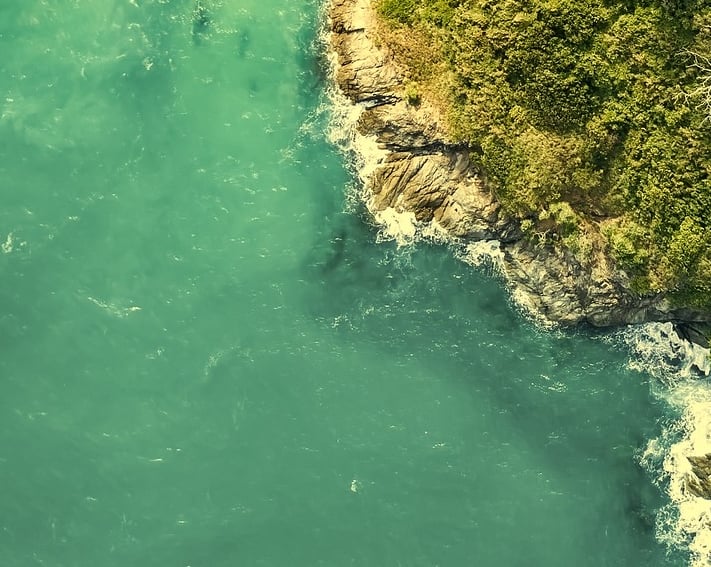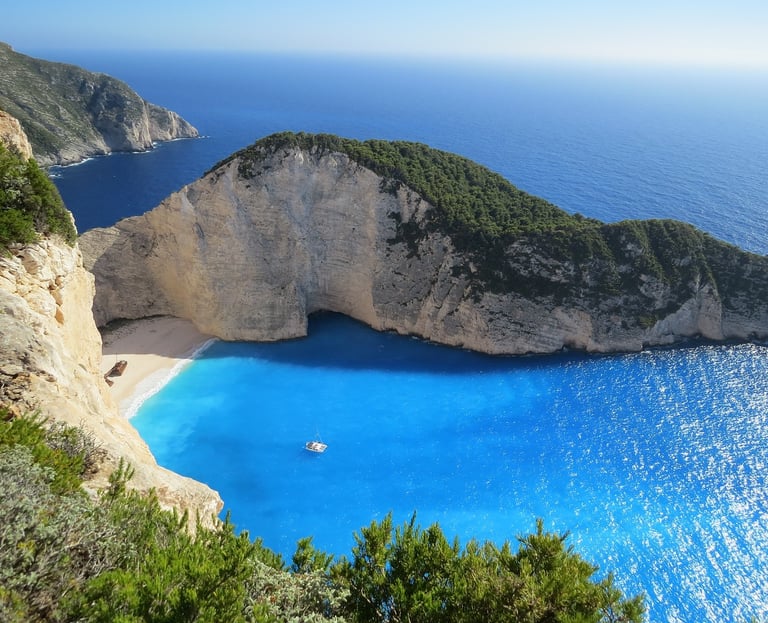10 Important Facts About Oceans You Should Know
Discover 10 fascinating facts about oceans, from how tiny plants power our planet to the mysteries of deep-sea organisms. Explore ocean exploration challenges, the science behind ocean color, and t...
BLOGSCIENCE FACTS
4/25/20254 min read
Phytoplankton: The Ocean’s Oxygen Factories
Phytoplankton in oceans, tiny plant-like free-floating photosynthetic microorganisms, generate more than 50% of the world's oxygen. They are mostly found in aquatic environments such as oceans. These organisms generate their own food using sunlight, water, and carbon dioxide through photosynthesis, and they form the food base for many sea creatures.
Why Deep-Sea Exploration Is So Challenging?
Almost 80% of the ocean remains unexplored due to the extreme environmental conditions prevailing there. For instance, the pressure in the deep sea may be around 1000 times of the surface and it is extremely cold. Also, visibility is nearly zero because of the lack of light penetration. It requires some advanced technology to be adapted, which makes Ocean exploration very expensive. In addition, a high level of risk and uncertainty exists under such conditions.
How Do Organisms Survive in the Deep Sea?
The deep sea refers to the ocean depths exceeding 200 meters. Here, sunlight begins to fade very rapidly. Below 1000 meters in the deep sea, organisms live in complete darkness. Adding to this are extreme cold and high pressure. However, these organisms have developed some mechanisms to survive these harsh conditions. For example, some organisms rely on chemosynthesis instead of sunlight-based photosynthesis, and some organisms use bioluminescence to attract prey and find mates
The Deepest Part of the Ocean: Challenger Deep
The deepest point on Earth is the Challenger Deep, in the Mariana Trench, located in the western Pacific Ocean. The depth is approximately 10,984 meters below sea level.
The Science Behind the Ocean's Colour
Sunlight contains a full spectrum of visible light, ranging from red to violet. Water molecules absorb red, orange, and yellow light more effectively than blue, allowing blue light to penetrate deeper into the ocean. The blue appearance of the ocean is primarily due to the selective absorption and scattering of sunlight by water molecules, which scatter blue light back to our eyes. In some regions, especially where there is a high concentration of algae or dissolved organic matter, the sea may appear green due to the reflection and scattering of green light by these substances.




Why Tides? The Effect of Moon’s gravity
The moon causes a bulge in the ocean on the side of the Earth that faces the moon. Another bulge appears on the exact opposite side due to the inertia effect. These bulges, in turn, cause tides in the ocean. This, combined with the sun's gravity adds to or reduces the effect depending on the position of the sun. During the new moon and full moon days, the tidal effects add up due to the alignment of sun, moon and earth. Tides aid in distributing nutrients in coastal waters and thus support marine life. Electricity is also being generated from tidal energy, which is a reliable source of renewable energy.
Plastic Problem: Drowning the Oceans in Waste
More than eight million tonnes of plastic are estimated to enter the oceans each year. It is also estimated that by 2050 there will be more plastic by weight than the weight of fish in the sea. Plastics have already started to affect sea life. Some Marine animals ingest plastics thinking of them as food. Some marine mammals get entangled in plastics, causing injury or death. Microplastics (less than 5 mm) have been found in seafood, water and even salt. This plastic pollution not only affects the marine ecosystem but also raises serious health concerns for humans.




The Ocean’s Food Chain: From Surface to Deep Sea
The food chain in the sea is a very complex system. It starts with primary food producers called autotrophs. These include phytoplankton, algae, etc., which produce their own food from sunlight and carbon dioxide through photosynthesis. These primary producers are consumed by primary consumers such as zooplankton and krill. These primary consumers are, in turn, consumed by secondary consumers like small fish. The secondary consumers are further consumed by tertiary consumers like large fish and apex predators like sharks. In the deep sea, photosynthetic primary producers cannot exist, and the food chain from the surface of the sea cannot penetrate. There exists a different system where primary producers are chemosynthetic bacteria that generate their own food from chemicals from hydrothermal vents. These bacteria are, in turn, eaten by tubeworms and vent crabs.
Why Is Seawater Salty?
Seawater contains around 3.5% salt by weight. This has happened over a period of millions of years. River water and streams have taken minerals such as sodium, potassium, calcium, magnesium, chloride, and bicarbonate from rocks and soils and carried them to the sea, where they keep accumulating. When evaporation happens, only the water escapes from the sea, whereas the salt remains unaffected by evaporation. Even though rivers carry salt to the sea, it is in very small quantities to be felt which is why the river tastes fresh. Whereas in the sea, salt has accumulated over geological time.
Importance of Marine Snow
Marine Snow: These are organic materials made up of dead plankton, animal waste, mucus, and other debris that clump together. This rains down and slowly drifts to the deep sea, and hence has acquired the name “marine snow”. It serves as a critical food source for deep-sea life that mainly depends on food from the surface. This can be said to be the ocean’s way of recycling.
Covering over 70% of our planet, oceans are home to nearly 80% of all life on Earth. From vibrant coral reefs to the darkest ocean trenches, marine ecosystems support the majority of Earth’s biodiversity. Protecting our oceans means preserving the richest reservoir of life on the planet—making ocean conservation vital for sustaining global ecosystems and future generations.
© 2025. All rights reserved.